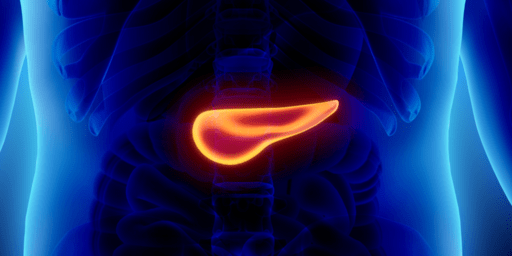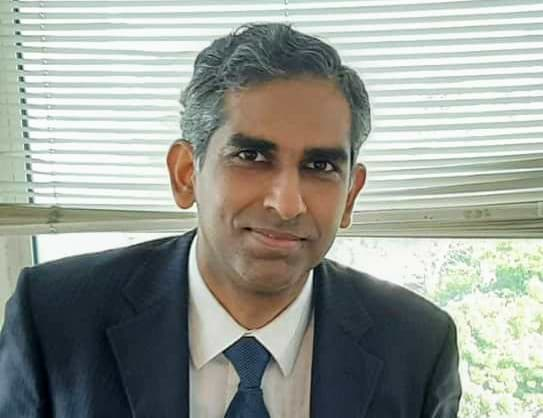Chronic Pancreatitis: Symptoms, Diagnosis, Causes and Treatment

Introduction
Chronic pancreatitis is a progressive inflammatory disease of the pancreas characterised by the destruction of the pancreatic parenchyma and subsequent fibrosis. It may worsen over time leading to permanent damage, pancreatic insufficiency, pain and associated complications.
Anatomy and Function of the Pancreas
The pancreas is a flat long organ lying in the upper abdomen behind your stomach and in front of the vertebral body. It is a soft gland, which is divided into a head, body and tail. It is intricately attached to the duodenum, which is a part of the intestine. The bile duct also courses through the head of the pancreas before draining into the duodenum. The pancreatic juice also drains into the duodenum and a thin slender tube carrying it traverses the whole of the pancreas and is called the pancreatic duct.
The pancreas has many important functions. It produces enzymes for digestion (exocrine function) and various hormones (endocrine function).
Causes and Risk factors for Chronic Pancreatitis
Alcohol is the most common aetiology worldwide, while idiopathic pancreatitis is the most common type in India and China. Other risk factors for chronic pancreatitis include cigarette smoking, gallstones, autoimmune and genetic.
Diagnosis of Chronic Pancreatitis
Proper diagnosis of chronic pancreatitis is crucial for effective management. Imaging techniques (such as CT scans and MRI), blood tests (including pancreatic enzyme levels), and endoscopic procedures (like endoscopic ultrasound and ERCP) are often used to diagnose the condition.
Symptoms of Chronic Pancreatitis
Chronic pancreatitis is a cause of considerable morbidity as pain, steatorrhea and diabetes mellitus.
When symptoms occur, they may include:
- Pain in your upper abdomen that radiates to the back
- Unintentional weight loss
- Fatty stools, which are loose, pale, and don’t flush away easily
- Nausea and vomiting
- Jaundice, which is characterised by a yellowish discolouration in your eyes and skin
- Internal bleeding
- Intestinal blockage
Pain is a prominent feature of chronic pancreatitis,42 occurs in 85%–90% of patients, and control of pain is the goal of treatment. Painful episodes can last for hours or even days. Some people find that eating or drinking can make their pain worse. As the disease progresses, the pain may become constant.
Natural history of Chronic Pancreatitis
A variable course characterises the natural history of chronic pancreatitis stretching over decades. Recurrent acute pancreatitis occurs in the early stages. Repeated inflammation can lead to permanent scarring and damage. Calcium stones and cysts may develop in your pancreas, which can block the duct, or tube, that carries digestive enzymes and juices to your stomach. The blockage may lower the levels of pancreatic enzymes and hormones, which will make it harder for your body to digest food and regulate your blood sugar. This can cause serious health problems, including malnutrition and diabetes.
Pain is a prominent clinical feature of chronic pancreatitis and the most troublesome symptom for which medical attention is often sought.
Treatment of Chronic Pancreatitis
Treatment for chronic pancreatitis focuses on reducing your pain and improving your digestive function. Approximately half the patients with pain because of chronic pancreatitis need an intervention aimed primarily at pain relief. The other complications that may require surgical intervention include biliary, duodenal, and major venous obstruction. The damage to your pancreas can’t be undone.
Treatment for pancreatitis can include medication, endoscopic therapies, or surgery.
Quitting alcohol, following a pancreatitis diet low in fat, not smoking, and maintaining a healthy weight can help manage the condition.
Medical Treatment of Chronic Pancreatitis
Medical management includes analgesics, pancreatic enzyme supplementation and antioxidants.
Endoscopic Treatment of Chronic Pancreatitis
Endoscopic therapy in chronic pancreatitis possibly eases pain by decreasing the obstruction of the pancreatic duct and decreasing ductal hypertension. It has also been used as a bridge to surgery and in assessing a potential response to surgery. The modalities include endoscopic pancreatic sphincterotomy, ductal dilatation, stone removal, ESWL for pancreatic stones that cannot be extracted by endoscopic techniques alone, and insertion of pancreatic stent(s) for stricture of the pancreatic duct.
Overall, the combined results of all studies show that over 60% of patients undergoing pancreatic endotherapy are pain-free 1 year after the procedure
Surgery for Chronic Pancreatitis
Surgery for chronic pancreatitis is done in patients who require routine use of drugs for pain control, cannot maintain satisfactory body weight, or cannot maintain employment or normal daily routines because of chronic or recurrent symptoms.
In patients with dilated pancreatic ducts, drainage procedures like modified Puestow or lateral pancreaticojejunostomy are commonly done. The other procedures usually involve some resection of the pancreas along with drainage of the pancreatic. Several variations have been developed, including the traditional pancreaticoduodenectomy (Whipple operation), a limited resection of the pancreatic head (Beger operation), a combined opening of the PD and resection of a part of the pancreatic head (Frey operation) and variations of the above.
Lateral pancreaticojejunostomy relieves pain in 65%-93% of patients. The morbidity and mortality rates are low, averaging 20% and 2%, respectively. Persistence of pain relief for >2 years is seen in over 60% of patients.
Stay Alert! Stay Healthy!
Wish you a speedy recovery!

